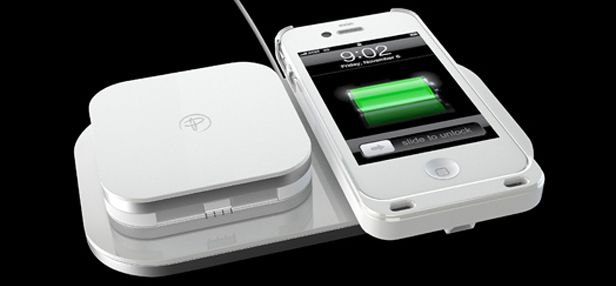Wireless Charging—Has Its Time Finally Arrived?
The idea of charging your phone without plugging it in seems appealing, but consumers have been slow to adopt it.
At a time of wireless everything—from phones and Internet to headsets and keyboards—it seems tedious that our gadgets remain tethered to an outlet whenever they need a charge. It’s especially galling given that the technology has been available since Nikola Tesla first demonstrated wireless power through magnetic induction in the 1890s.
Why hasn’t cord-free charging—where a device gets charged when you place it on a charging surface—caught on? It’s not due to a shortage of products, nor from a shortage of companies that want to sell them. More than 125 businesses have joined the Wireless Power Consortium, formed in late 2008 to create a global charging standard. While the consortium hopes the technology will one day become as common as Bluetooth in most devices and, like Wi-Fi, available in many public spaces, wireless charging has been slow to take off.
Market demand may finally be arriving as the number of power-hungry mobile devices grows. “Phones are running out of charge faster and faster, whereas battery capacity is limited. That is not going to change,” says Ron Rabinowitz, CEO of Duracell Powermat, a company that was early to sell wireless charging smartphone cases and charging mats in 2009. The company had sales of $100 million in the last fiscal year.
This story is only available to subscribers.
Don’t settle for half the story.
Get paywall-free access to technology news for the here and now.
Subscribe now
Already a subscriber?
Sign in
Pike Research predicts that wireless charging for mobile devices alone will earn companies like Powermat almost $6 billion in revenue by 2020, up from about $1 billion in 2012. “The carriers are pretty smart. They know what their consumers are upset about,” says Bret Lewis, director of Fulton Innovation, a company licensing a wireless power technology.
Wireless charging mats in public places, where users can recharge without having to carry around a power pack or fight over an outlet, could prove appealing. To charge a phone without a cord today, most phone owners would have to buy a smartphone case or battery pack with an embedded receiver, and then use a charging mat with a compatible transmitter. But these adoption barriers could soon disappear.
Last week, for example, Nokia said it would include wireless charging receivers inside its Windows 8 smartphone release, the Lumia 920, and will partner to make charging pads available at the Coffee Bean & Tea Leaf shops in the U.S. and at the Virgin Atlantic London Heathrow terminal.
Other manufacturers are interested in making space for wireless charging receivers in devices. Some are working to integrate the technology alongside near-field communication chips, another technology now coming into phones, says Lewis, who also leads a working group within the Wireless Power Consortium. In addition, component makers have shown an interest. Earlier this month, for example, supplier IDT partnered with Intel to develop technology for wirelessly charging smartphones placed within an inch of an Intel laptop or Ultrabook.
Wireless charging is taking off in Japan. The country’s leading carrier, NTT DoCoMo, has dozens of device models and displays the country’s growing number of wireless charging hotspots on an app.
Duracell Powermat, a New York-based joint venture that Powermat Technologies formed with Procter & Gamble’s Duracell last year, is focusing on partnerships in the U.S. to bring about a similar trajectory.
General Motors, which also took a stake in Duracell Powermat, plans to include its systems in future Cadillac, Chevrolet, and Buick lines, Rabinowitz says. Powermat is also now working with Madison Square Garden, Delta Airlines, shopping malls, hair salons, and cosmetics companies to bring charging hotspots to the New York City region. It plans to expand its marketing nationally later this year.
Widespread wireless charging may be hindered, however, if competing companies get in each other’s way. The Wireless Power Consortium standard, Qi, ensures that different brands are compatible with one another. However, Powermat, frustrated by the pace of adoption of Qi, left the group recently to work with Qualcomm and Samsung on a competing standard. So a Powermat charging pad in the LaGuardia Airport Delta terminal, for example, won’t work with a Nokia Lumia Qi-compatible phone. Rabinowitz doesn’t see that as much of a problem. Eventually, he says, one standard will win.
Wireless charging hasn’t always been as efficient as plugging into an outlet, but the technology has improved. With receivers being integrated directly into devices, the magnetic induction charging method is just as quick as using a wall outlet, says Lewis. A new, emerging wireless charging method called magnetic resonance would also allow for efficient wireless charging at a distance. Startup Witricity (see “Charge Your Phone (and Your Car) From Afar”) and the Intel/IDT collaboration are pursuing this method (see “Intel’s Wireless Power Play”). Unfortunately, a sci-fi scene of ambient power upon entering a room is still a ways off.
